


Fitness Improvement For Beginners
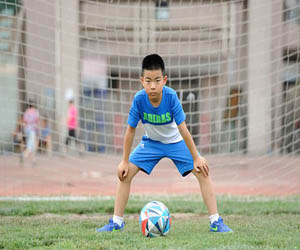
Starting a fitness journey can be a transformative experience, especially for beginners. It's a path to improved health, enhanced vitality, and increased self-confidence. However, for those who are new to fitness, the journey can seem daunting. In this article, we will explore effective strategies and essential tips for fitness improvement that are tailored to beginners.
1. Set Realistic Goals: The first step in your fitness journey is setting clear and achievable goals. Your goals can be both short-term and long-term, but it's important that they are realistic and specific. For example, you might aim to walk 30 minutes a day, lose a certain amount of weight, or complete a 5K run within a few months.
2. Start Slowly: One of the most common mistakes beginners make is starting too aggressively. It's crucial to ease into your fitness routine to avoid burnout and injury. Begin with activities you enjoy and are comfortable with, even if they are less intense. You can gradually increase the intensity as your fitness level improves.
3. Create A Structured Plan: Having a structured fitness plan can help you stay on track. This plan should include the type of exercise, the frequency, and the duration of each session. It can also be helpful to have a specific time set aside for your workouts.
4. Consistency Is Key: Consistency is the bedrock of fitness improvement. Make a commitment to sticking to your plan, even when motivation wanes. Establishing a routine and making exercise a non-negotiable part of your day will help you stay on course.
5. Embrace Variety: Variety in your workouts can keep things interesting and prevent boredom. Mix different forms of exercise, such as cardio, strength training, flexibility exercises, and even outdoor activities. Variety can also help prevent overuse injuries and promote overall fitness.
6. Listen To Your Body: Paying attention to your body is essential. If you experience pain, dizziness, or extreme discomfort during your workouts, stop immediately. Ignoring these signals can lead to injuries.
7. Proper Nutrition: A well-balanced diet is an integral part of any fitness improvement plan. Ensure you're getting the necessary nutrients to fuel your body for exercise and support recovery. Consult with a nutritionist or dietitian if needed.
8. Stay Hydrated: Proper hydration is critical for overall health and fitness. Drink enough water before, during, and after your workouts to stay properly hydrated.
9. Get Adequate Rest: Rest and recovery are just as important as exercise. Allow your body time to recuperate by getting enough sleep, as it is when your body repairs and grows stronger.
10. Seek Support: Consider joining a fitness class, finding a workout buddy, or working with a personal trainer or coach. Having a support system can keep you motivated, accountable, and help you overcome any obstacles.
11. Celebrate Small Wins: Recognize and celebrate your achievements, no matter how small they may seem. Progress can be gradual, and acknowledging your successes along the way can provide motivation and a sense of accomplishment.
12. Be Patient: Lastly, be patient with yourself. Fitness improvement takes time. Understand that you may face challenges and setbacks, but persistence and consistency will ultimately lead to positive results.
Embarking on a fitness journey as a beginner can be both exciting and rewarding. By setting realistic goals, starting slowly, staying consistent, listening to your body, and embracing proper nutrition, hydration, and rest, you can build a strong foundation for your fitness improvement. Remember, the key to long-term success in fitness is commitment and a balanced approach. Over time, you'll find that the journey itself is as valuable as the destination, and you'll enjoy the many physical and mental benefits that fitness has to offer.
Embracing The Serenity Of Winter Sports
 2. The Joy Of Fresh Tracks: One of the most exhilarating aspects of gliding down pristine slopes is the opportunity to create fresh tracks. Each descent is a blank canvas awaiting your unique imprint, allowing you to write your story in the snow. There's a sense of freedom and liberation in leaving your mark on the mountain.
2. The Joy Of Fresh Tracks: One of the most exhilarating aspects of gliding down pristine slopes is the opportunity to create fresh tracks. Each descent is a blank canvas awaiting your unique imprint, allowing you to write your story in the snow. There's a sense of freedom and liberation in leaving your mark on the mountain.
3. A Symphony Of Silence: Gliding down pristine slopes often comes with a soundtrack of serenity. The only sounds are the swish of your skis or the carve of your snowboard on the snow and the gentle whisper of the wind. The tranquility of the winter landscape is an escape from the noise of everyday life.
4. The Magic Of First Light: Early mornings on the slopes offer a magical experience. As the first rays of sunlight touch the pristine snow, they create a sparkling, crystalline world that seems almost surreal. The interplay of light and shadow on the slopes is an awe-inspiring sight to behold.
Injury Prevention Techniques For Athletes
 3. Flexibility And Stretching: Flexibility is crucial for preventing injuries. Stretching exercises improve your range of motion, making you less prone to muscle pulls and tears. Dynamic stretching before activity and static stretching after can help.
3. Flexibility And Stretching: Flexibility is crucial for preventing injuries. Stretching exercises improve your range of motion, making you less prone to muscle pulls and tears. Dynamic stretching before activity and static stretching after can help.
4. Correct Technique And Form: Proper technique and form are paramount in preventing sports injuries. Inadequate form increases the risk of overuse injuries and acute trauma. Athletes should receive coaching to ensure they perform their sport correctly.
5. Cross-Training: Engaging in multiple sports or activities can reduce the risk of overuse injuries. Cross-training allows different muscle groups to be used, preventing excessive strain on one set of muscles or joints.

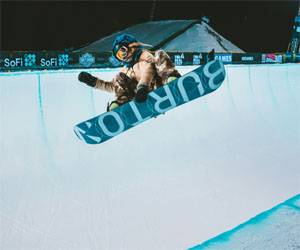
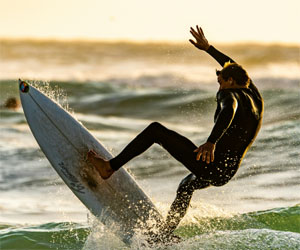
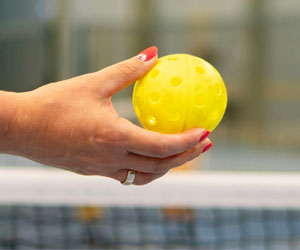
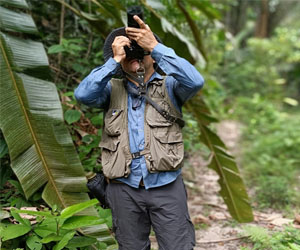

Embracing Elegance On The Slopes
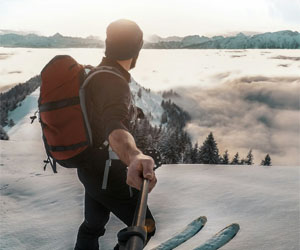 3. Mindful Breathing And Relaxation: The connection between body and breath is vital for grace on the slopes. Relaxation and controlled breathing help maintain composure. Focus on deep, intentional breaths to stay calm and centered. Relaxed muscles translate to better balance and improved riding.
3. Mindful Breathing And Relaxation: The connection between body and breath is vital for grace on the slopes. Relaxation and controlled breathing help maintain composure. Focus on deep, intentional breaths to stay calm and centered. Relaxed muscles translate to better balance and improved riding.
4. Choose The Right Terrain: Graceful skiing and snowboarding can be better expressed on certain terrains. Gentle, well-groomed slopes are ideal for practicing elegance. These areas allow you to perfect your form and experiment with your style. As you gain confidence, you can venture into more challenging terrain while still maintaining your grace.
5. Dress For Elegance: Your attire can contribute to your sense of grace. Opt for stylish, well-fitted ski or snowboard gear that not only keeps you warm and protected but also exudes a sense of refinement. Embrace colors and patterns that resonate with your personal style.
6. Develop Your Personal Style: Elegance in snow sports is also about finding your personal style and flair. Some riders prefer a classical approach with flowing turns, while others may embrace a more freestyle and creative style with tricks and jumps. Experiment and discover the style that resonates with you the most.
7. Enjoy The Scenic Beauty: Part of graceful skiing and snowboarding is the appreciation of the natural beauty surrounding you. Take a moment to absorb the breathtaking vistas and snow-covered mountains. Allow the serene surroundings to influence your movements and add depth to your experience.
8. Learn From The Masters: Watching and learning from experienced skiers and snowboarders can provide valuable insights into graceful riding. Study their techniques, mimic their movements, and adapt their styles to develop your grace on the slopes.
The Perfect Wave-Riding Companion
 Funboards: Versatility And Maneuverability
Funboards: Versatility And Maneuverability
Features: Funboards, also known as mini-malibus, combine elements of both longboards and shortboards. They are typically between 7 and 8 feet long and provide a great balance of stability and maneuverability. Funboards are excellent for intermediate surfers looking to progress beyond longboarding and experiment with more dynamic moves.
Shortboards: High-Performance Precision
Features: Shortboards are the go-to choice for advanced surfers seeking precision and responsiveness. They are typically 5 to 7 feet long, characterized by a narrow, pointed nose, and a sharp, high-performance rocker. Shortboards are designed for quick, agile maneuvers and are often used in professional competitions. They are ideal for experienced surfers looking to push the boundaries of their performance.
Pickleball Court Dynamics
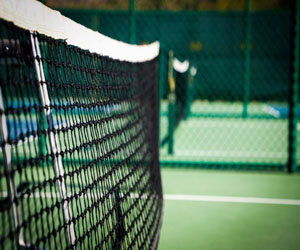 The Non-Volley Zone: Also known as "the kitchen," this is a crucial area on the court that extends 7 feet from the net on each side. The kitchen is a no-volley zone, meaning that players cannot hit the ball out of the air within this zone. This rule encourages strategic play, as players must carefully position themselves to avoid faulting.
The Non-Volley Zone: Also known as "the kitchen," this is a crucial area on the court that extends 7 feet from the net on each side. The kitchen is a no-volley zone, meaning that players cannot hit the ball out of the air within this zone. This rule encourages strategic play, as players must carefully position themselves to avoid faulting.
The Baseline: The back line of the court is where serves must originate. Players serve from behind this line, and the serve must clear the non-volley zone on the opposite side of the court. The baseline is a key starting point for each point and plays a role in determining the position of the serving team.
The Net: The pickleball net stands 34 inches at the center, which is lower than traditional tennis or badminton nets. The lower net height demands precise and controlled shots, particularly during the serve and volleys near the net.
Serving Boxes: Each side of the court is divided into two serving boxes. The serving team must serve diagonally into the opponent's service box, following specific serving rules. The diagonal serves create unique angles and placement opportunities, adding to the dynamic court dynamics.
Doubles vs. Singles: Pickleball is typically played in both doubles and singles formats, with different strategies and court dynamics in each. In doubles, players work as a team, cover the court together, and employ coordinated strategies. In singles, players have more court to cover, leading to increased lateral movement and reliance on individual skills.
Shot Placement: The compact court size emphasizes the importance of shot placement. Strategic placement of shots can force opponents out of position and create openings for offensive plays. Players often aim for the corners and sidelines to put pressure on their adversaries.
Strategies For Success
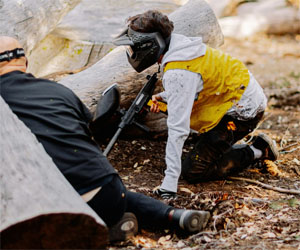 The Role Of Challenge Tactics In Paintball
The Role Of Challenge Tactics In Paintball
Challenge tactics in paintball involve tackling specific scenarios or obstacles that can impede your team's progress. These challenges can range from breaking through enemy lines to capturing a flag or defending a critical position. Mastering these tactics is essential for success in paintball, as they can turn the tide of the game in your favor.
Key Challenge Tactics In Paintball
Flag Capture And Defense: Many paintball games involve capturing flags or other objectives. To excel in this challenge, designate a team member or a group to capture the flag, while others provide cover and defend the area. Communication and coordination are vital to ensure the flag reaches its destination.
Obstacle Negotiation: Paintball fields are typically filled with various obstacles and structures. Knowing how to navigate these obstacles effectively, whether by using them as cover or as a vantage point, is crucial for success.
Suppressive Fire: When faced with a challenge, laying down suppressive fire can keep your opponents at bay. This tactic allows your team to move, reload, or change positions while restricting the movement of the opposing team.
Crisis Management: Sometimes, unforeseen challenges arise during a game, such as a key player being eliminated or a sudden change in the game's objective. Being able to adapt and manage such crises is an essential paintball skill.
Distraction And Feint: Employ diversion tactics to distract the enemy and lead them away from critical areas. By creating diversions, you can maneuver your team or carry out other objectives without immediate opposition.